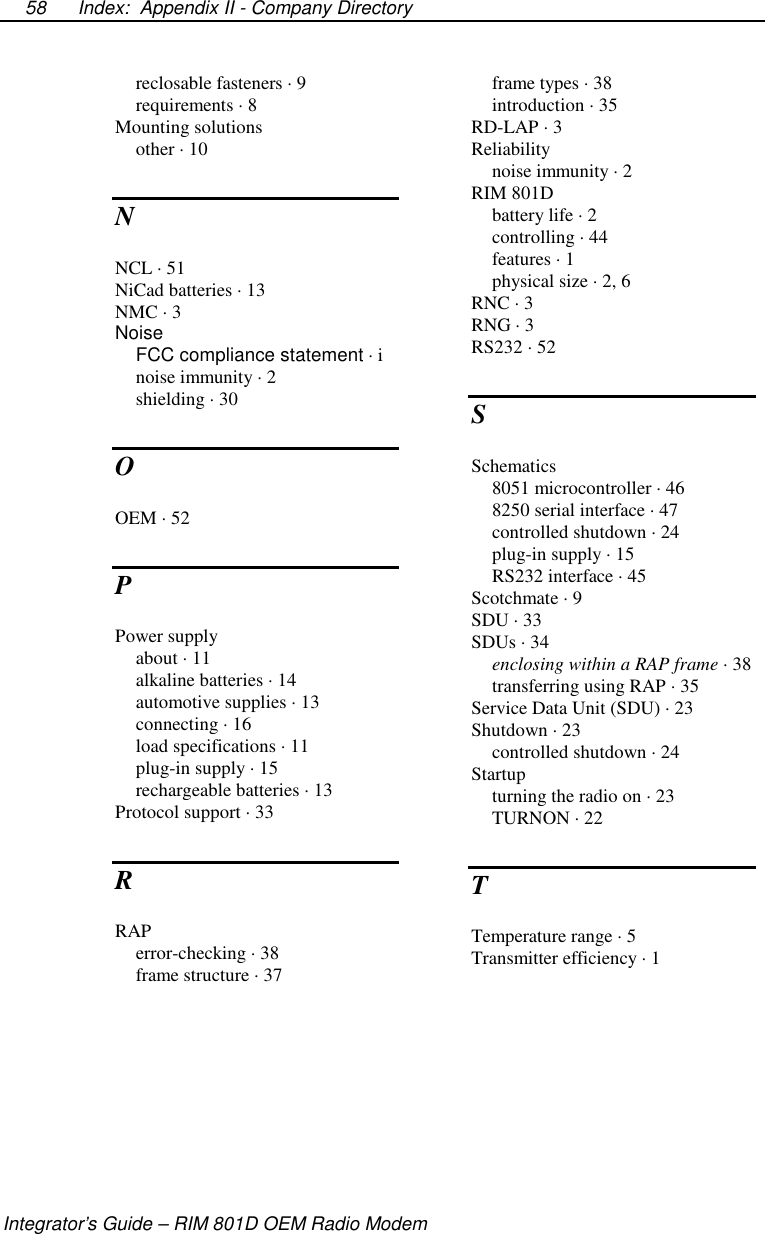General Dynamics Itronix XC6250RIM801D Laptop PC with RIM 801D ARDIS Radio Module User Manual User Manal RIM Manual
General Dynamics Itronix Corporation Laptop PC with RIM 801D ARDIS Radio Module User Manal RIM Manual
Contents
- 1. User Manal (RIM Manual)
- 2. Users Manual
User Manal (RIM Manual)

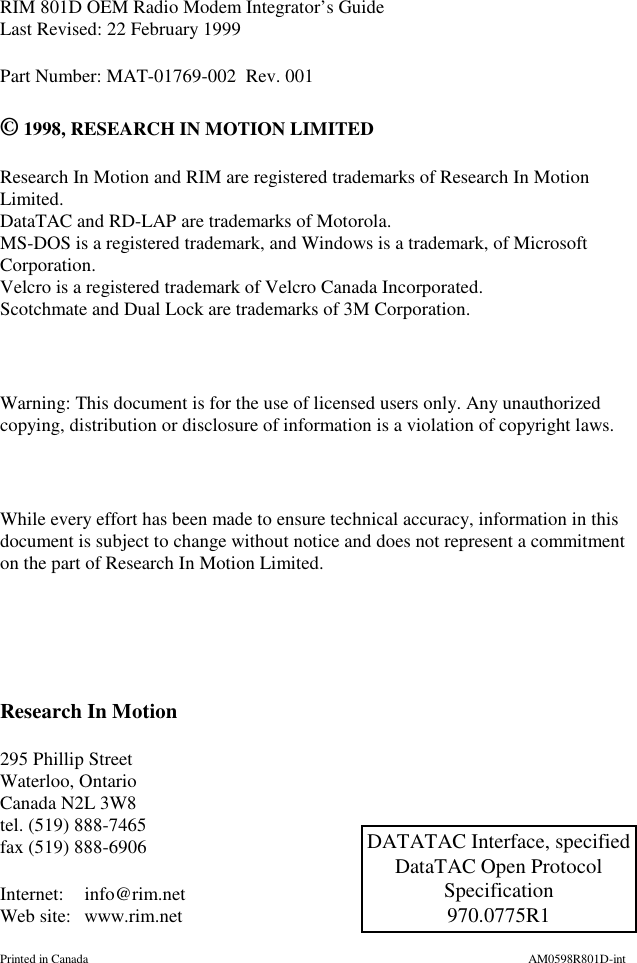
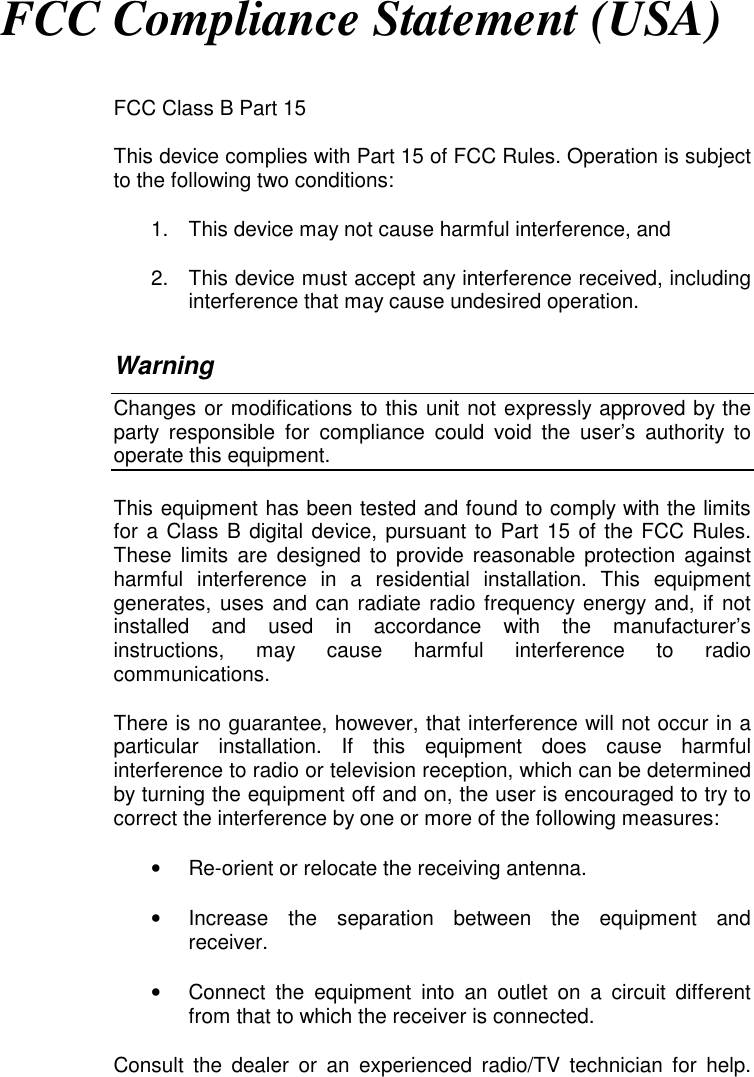


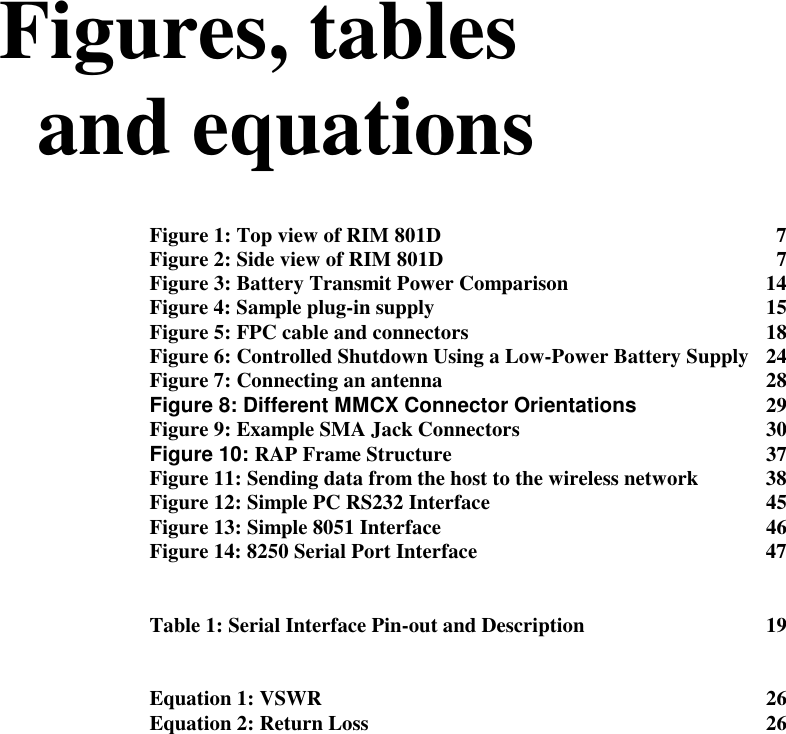
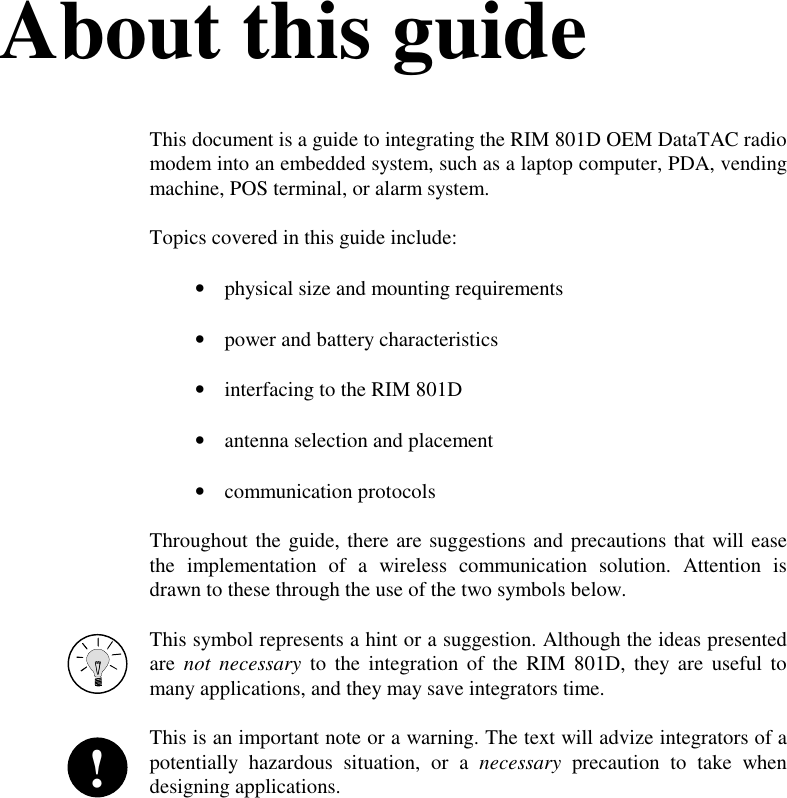
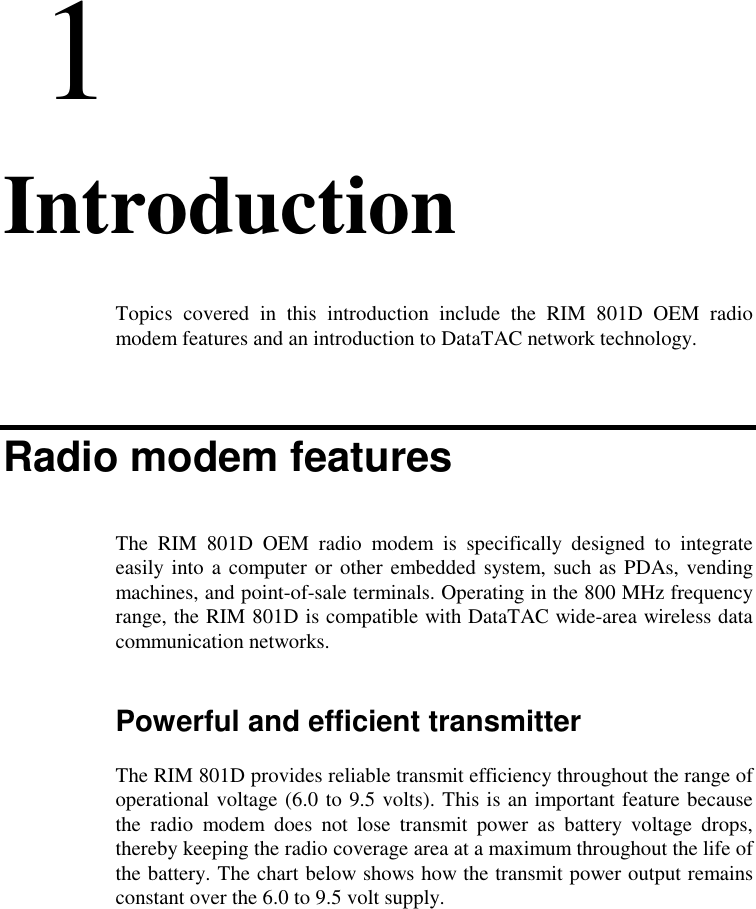
![Introduction: Radio modem featuresIntegrator’s Guide – RIM 801D OEM Radio Modem2Leveled Transmit PowerBattery Voltage [V]15.0018.0021.0024.0027.0030.0033.006.00 6.50 7.00 7.50 8.00 8.50 9.00Noise immunityThe RIM 801D is not de-sensitized by RF noise generated by nearbyelectronics. This makes the RIM 801D ideal for integration into hand-heldterminals, and eliminates the need for special shielding. Noise immunitysignificantly increases reliability, improves performance, extends batterylife, and increases the effective range of operation of the RIM 801D.Low power requirementsBattery life is a critical issue for portable devices: end-users want longlasting devices without heavy battery packs. The RIM 801D sets a newpower consumption standard for OEM-style radio modems by reducingstandby power to only 12 mA. This allows the RIM 801D to maximizeefficiency and ensure long battery life.Small sizeUsing a single board design, the RIM 801D is very thin, only 0.3” to 0.38”(7.5 to 9.6 mm). The RIM 801D is about the size of a credit card, with afootprint of 3.5” by 2.6” (87.5 by 66.3 mm). This tiny size makes the RIM801D very lightweight (only 2.3oz or 64g, including case) and allows thedevice to meet tight space requirements within most applications.](https://usermanual.wiki/General-Dynamics-Itronix/XC6250RIM801D.User-Manal-RIM-Manual/User-Guide-114945-Page-12.png)


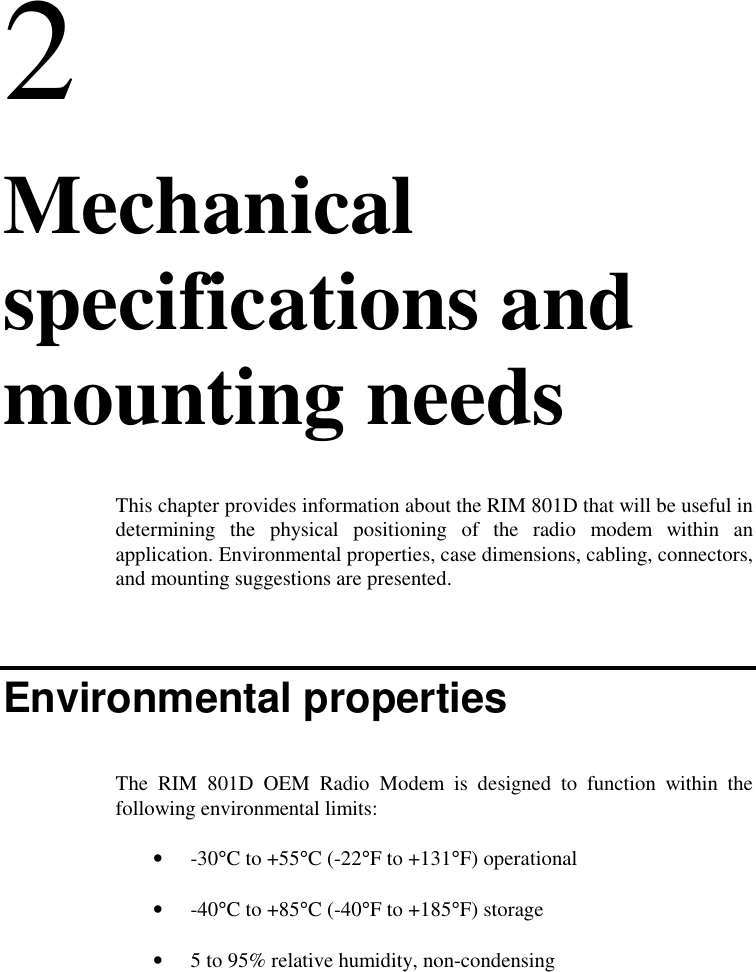


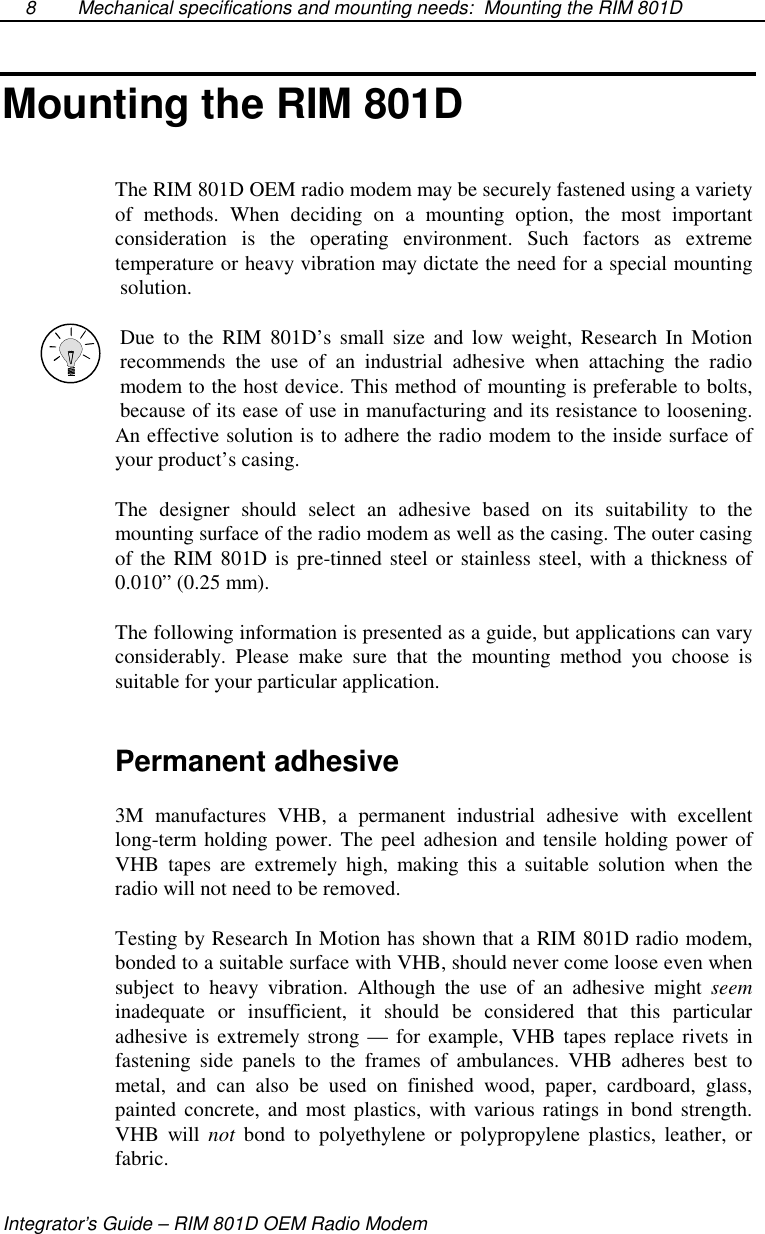
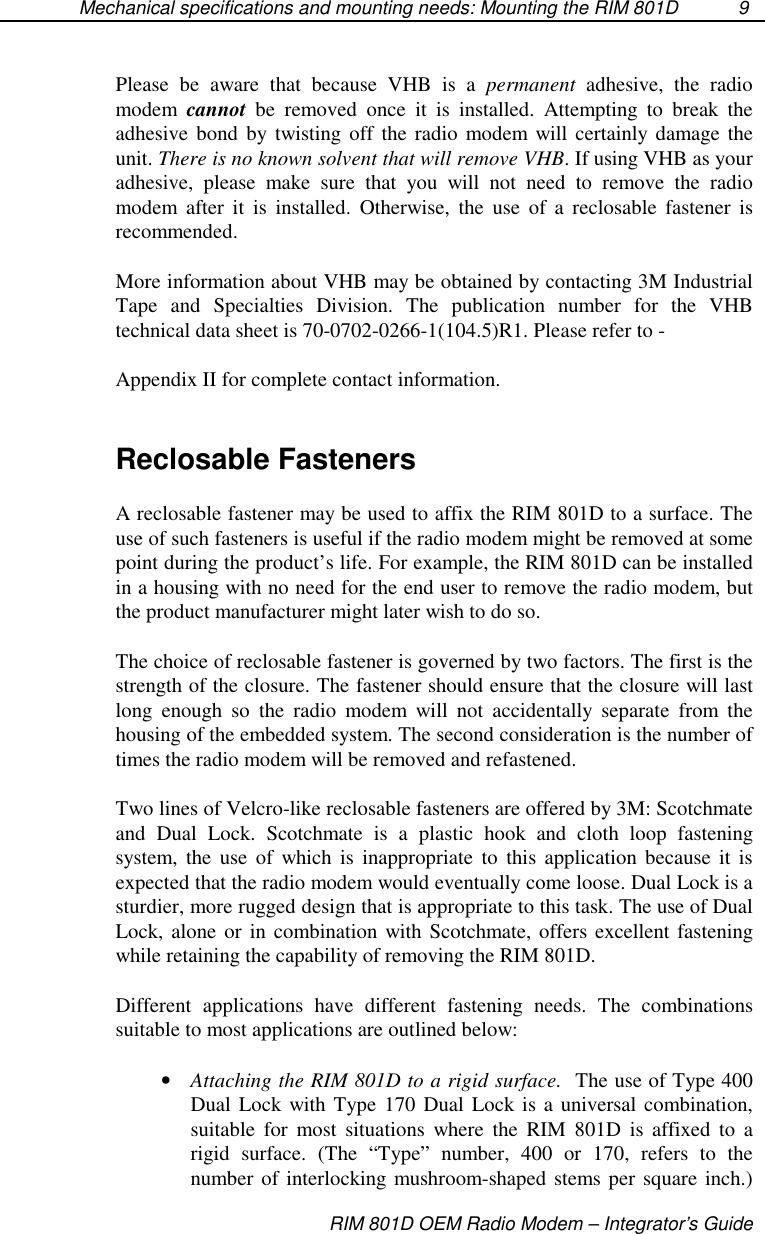
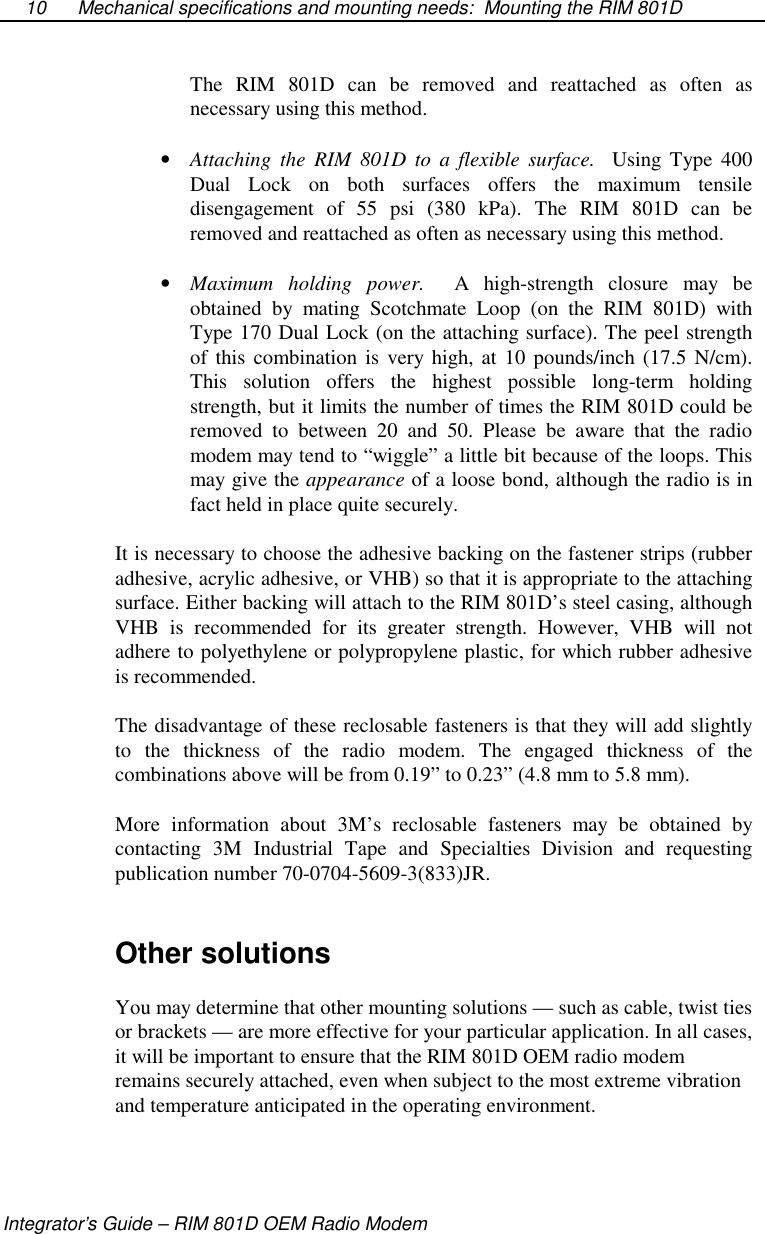
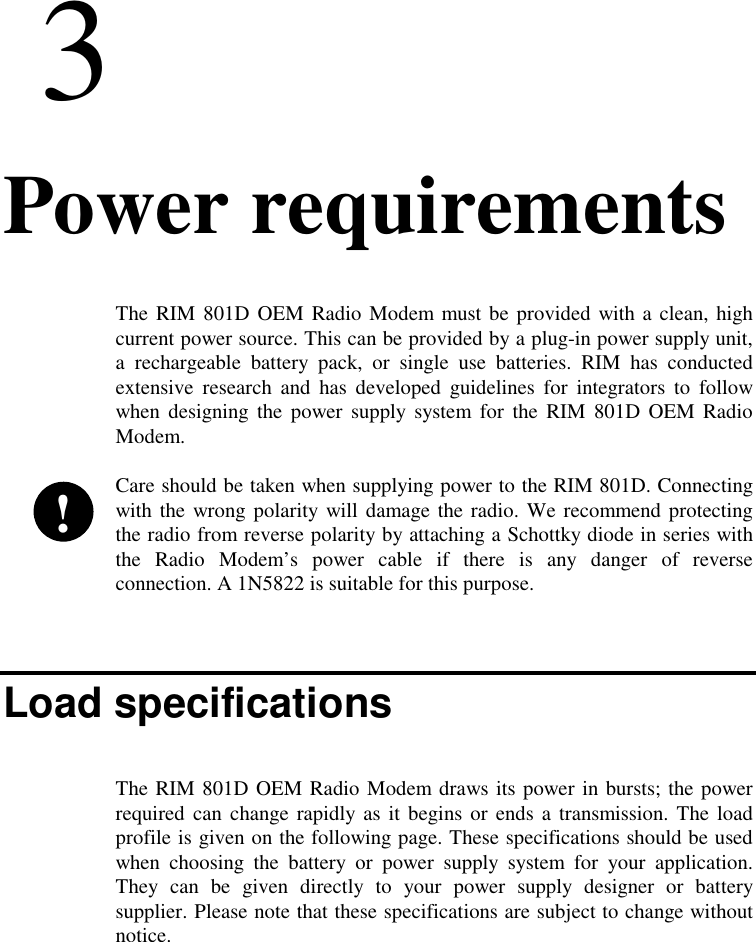

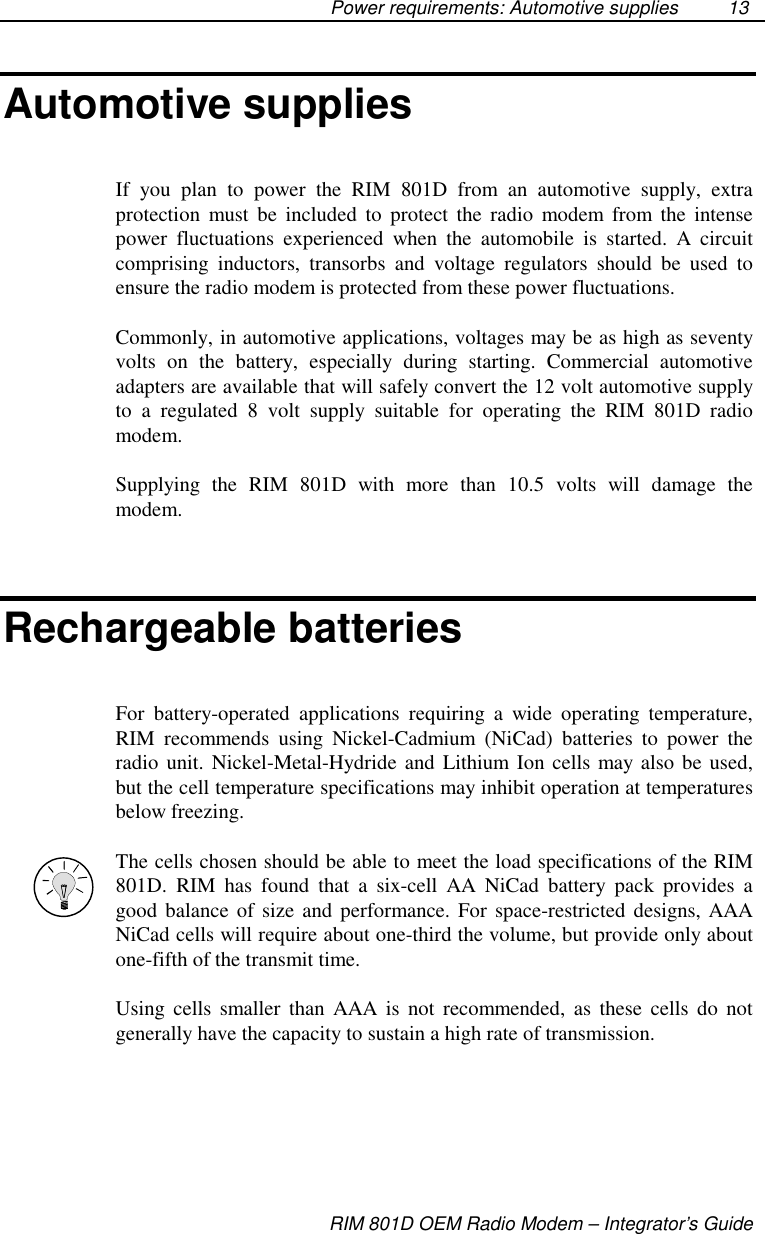
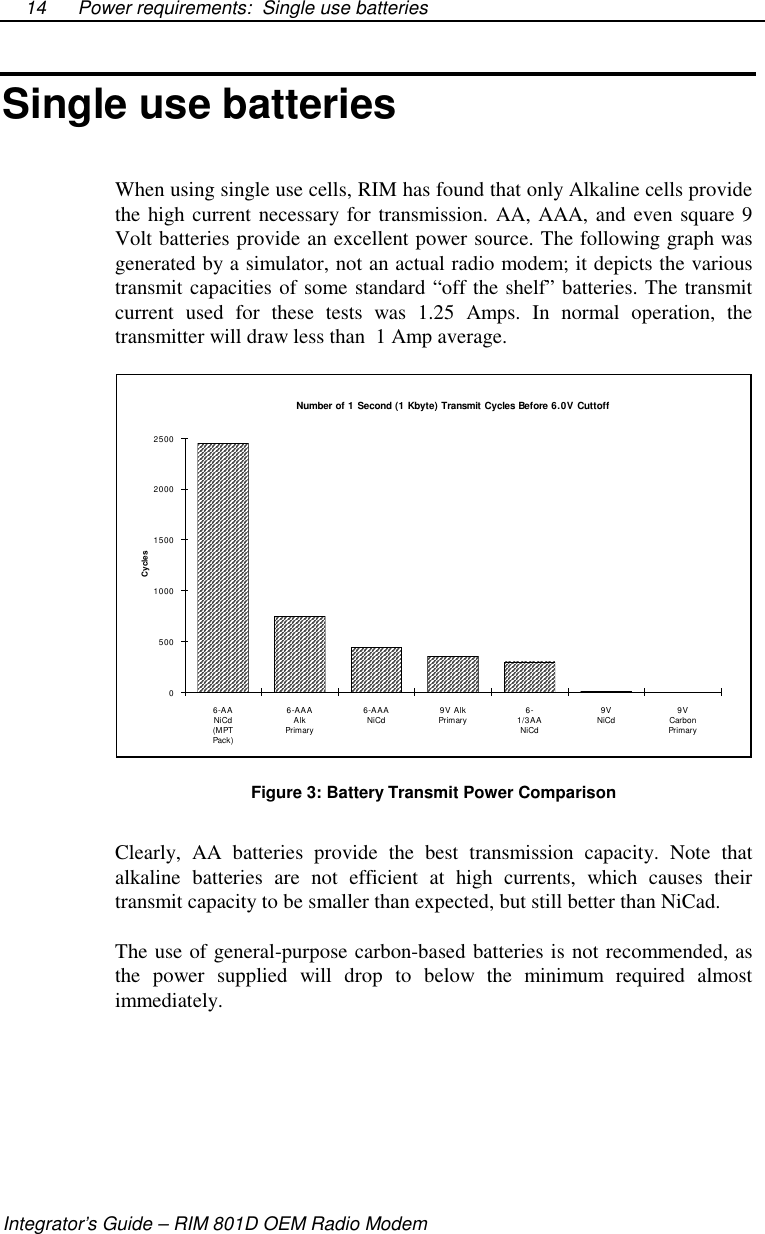
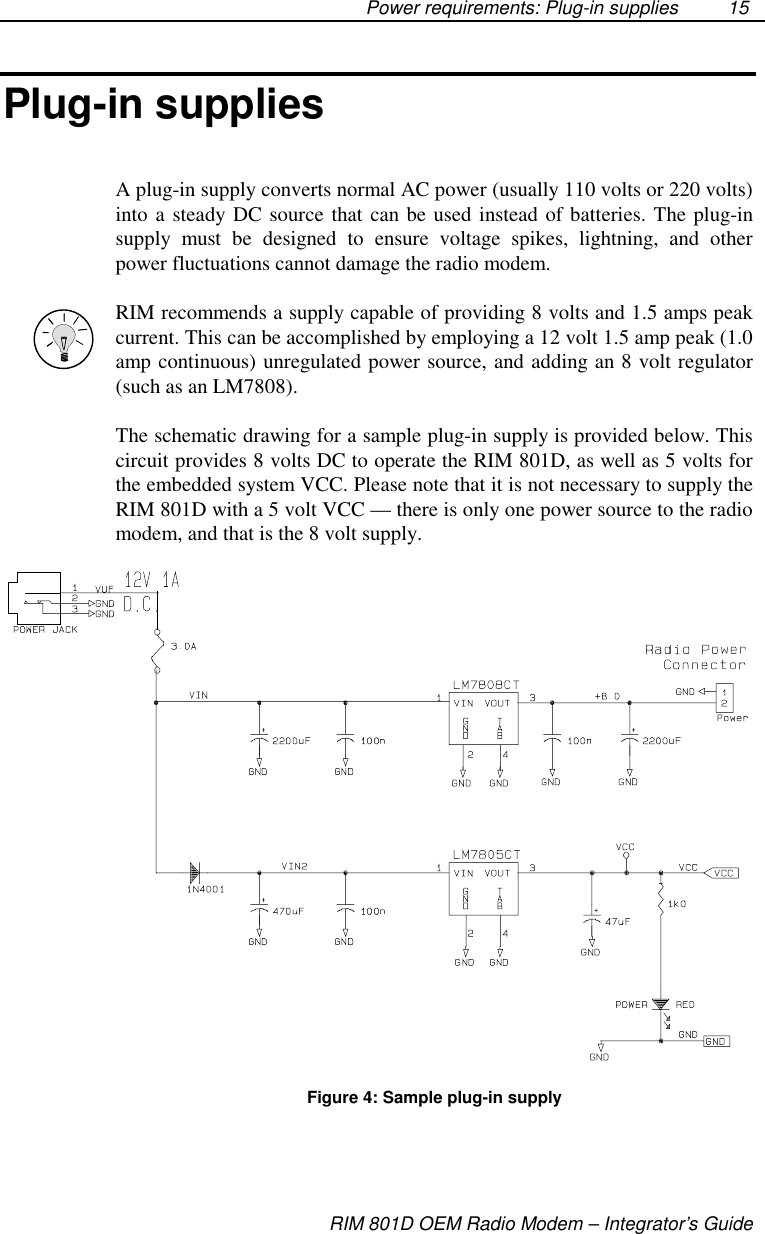


![Serial interface specification: Connecting the serial cableIntegrator’s Guide – RIM 801D OEM Radio Modem18Input Low Voltage 1.5 Volts Max.Input Leakage Current High 1.0 µAInput Leakage Current Low -1.0 µAThe RIM 801D can also be customized for 3.3 volts.Connecting the serial cableThe RIM 801D serial communication and power on/off signals are carriedon a flat 14-conductor flexible printed circuit (FPC) cable, which can pluginto a matching connector.An appropriate 4” 14-pin cable is available from Molex Canada, partnumber 88-00-8025. Different lengths and orientations are also available.The cable can plug into a matching connector such as an AMP 1.0 [0.039]FPC connector, surface mount, model 1-487951-4 (Please see -Appendix II for contact information)Example pictures of the FPC cable and connectors are shown below:Figure 5: FPC cable and connectors](https://usermanual.wiki/General-Dynamics-Itronix/XC6250RIM801D.User-Manal-RIM-Manual/User-Guide-114945-Page-28.png)
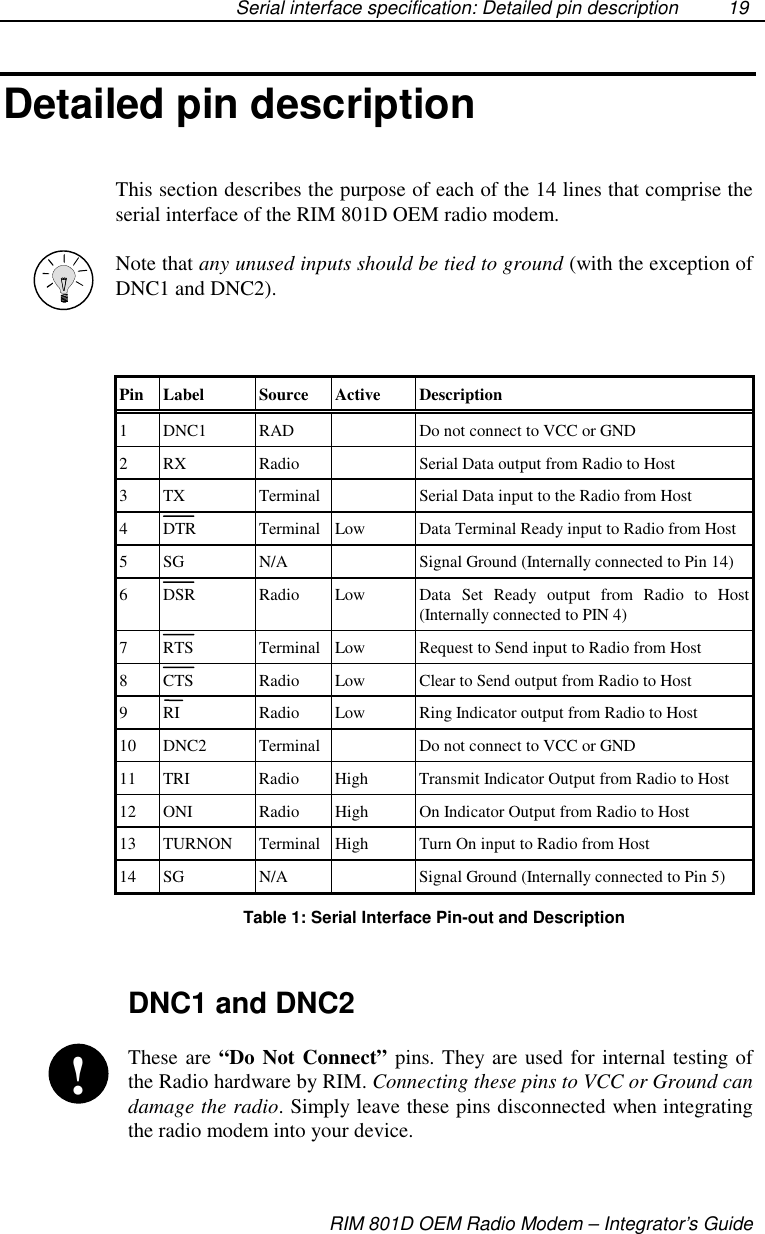
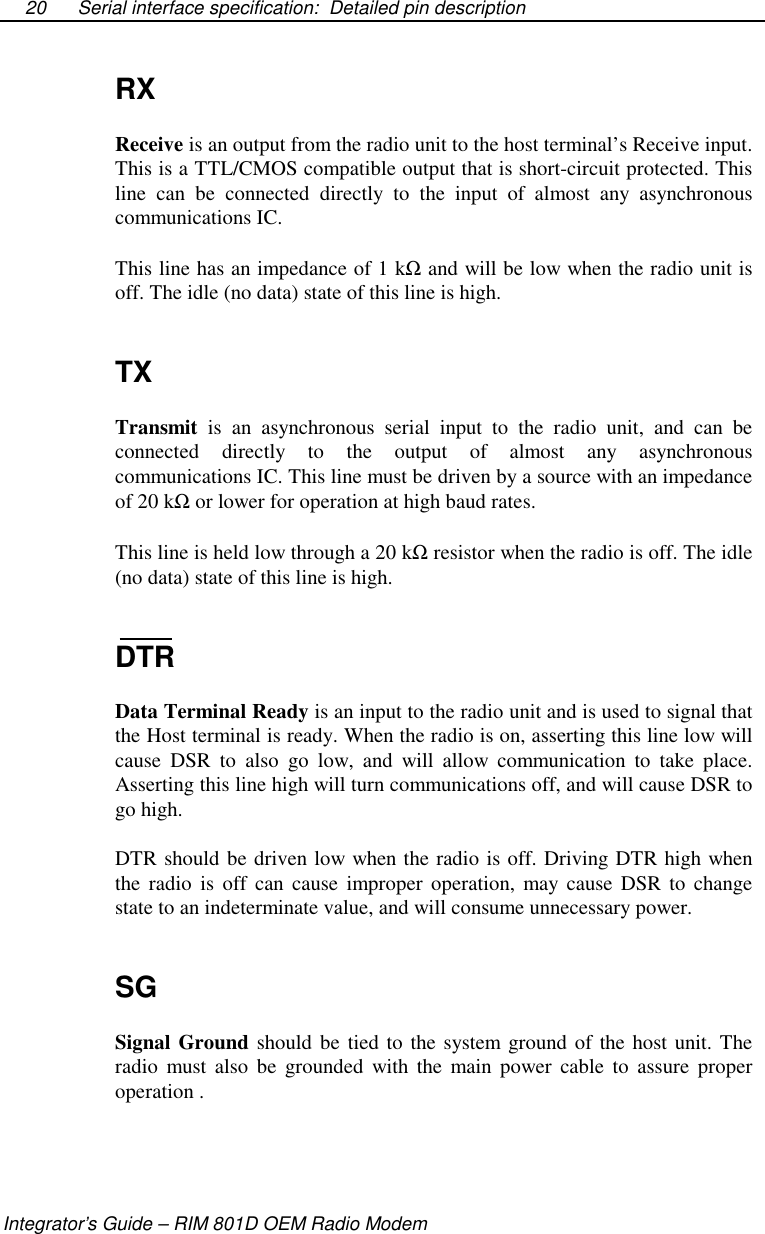


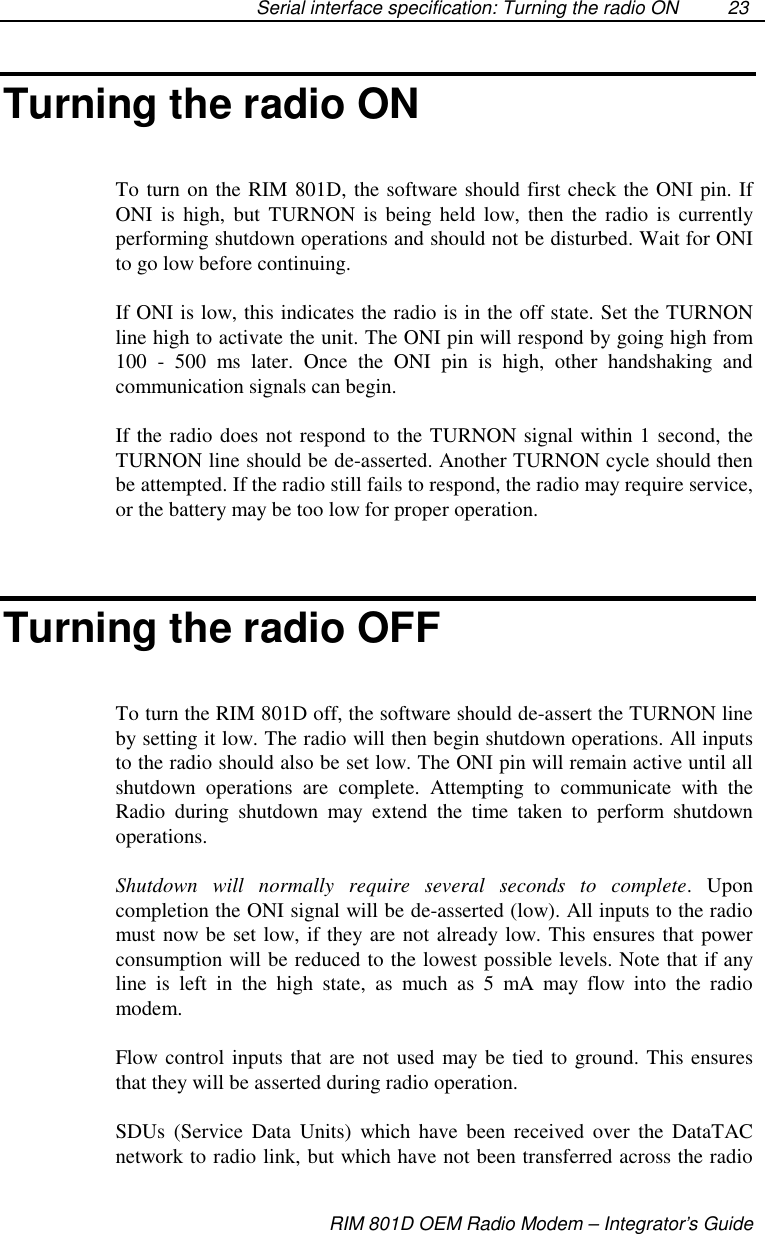




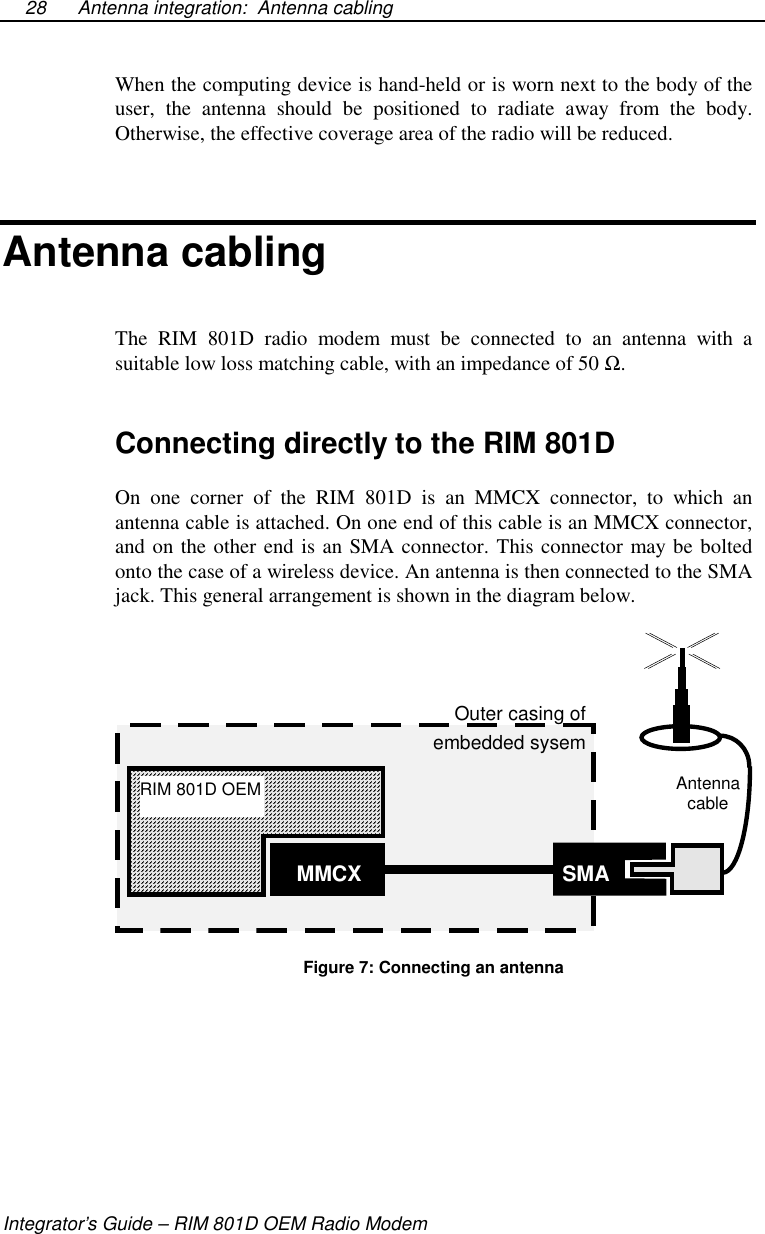





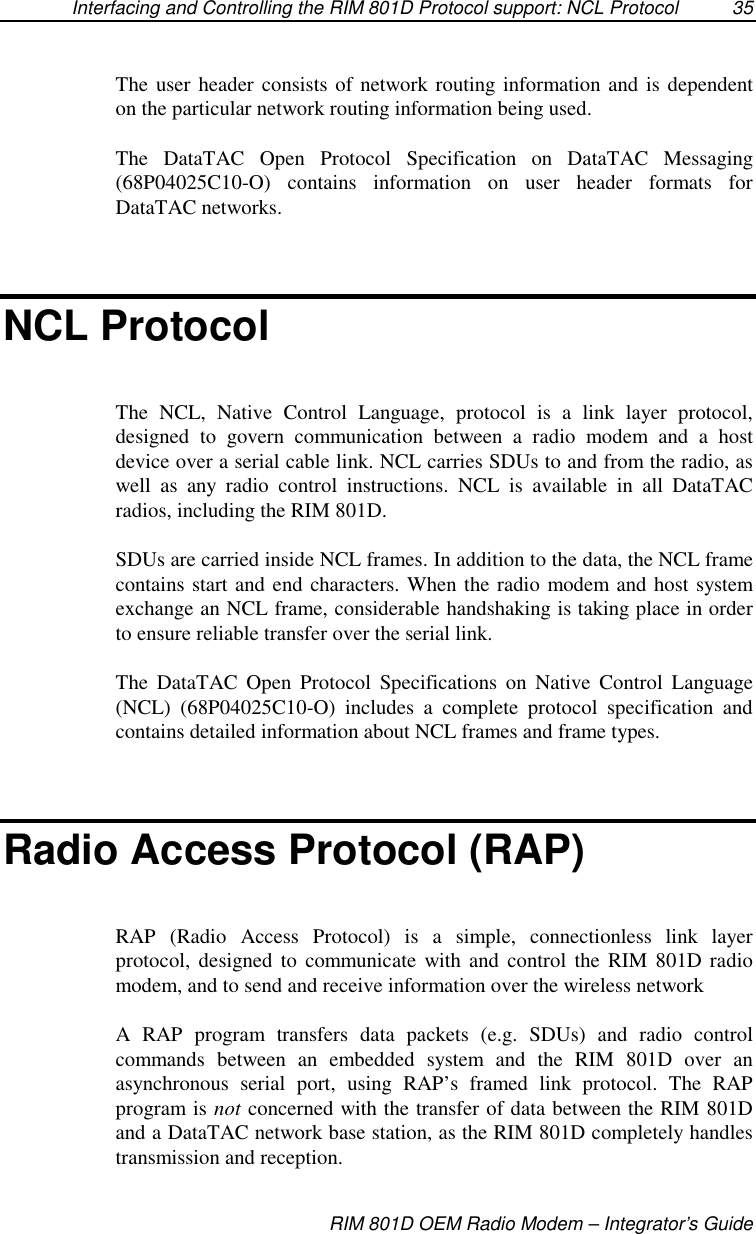

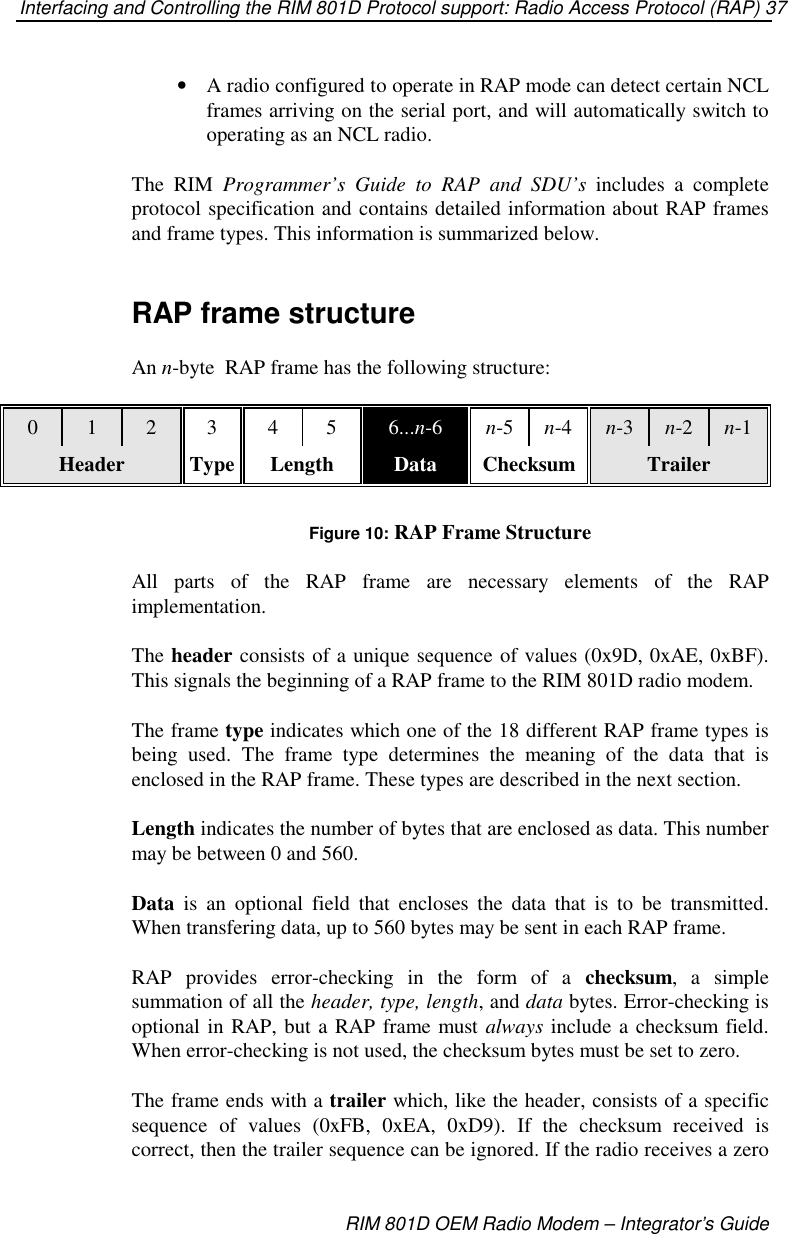

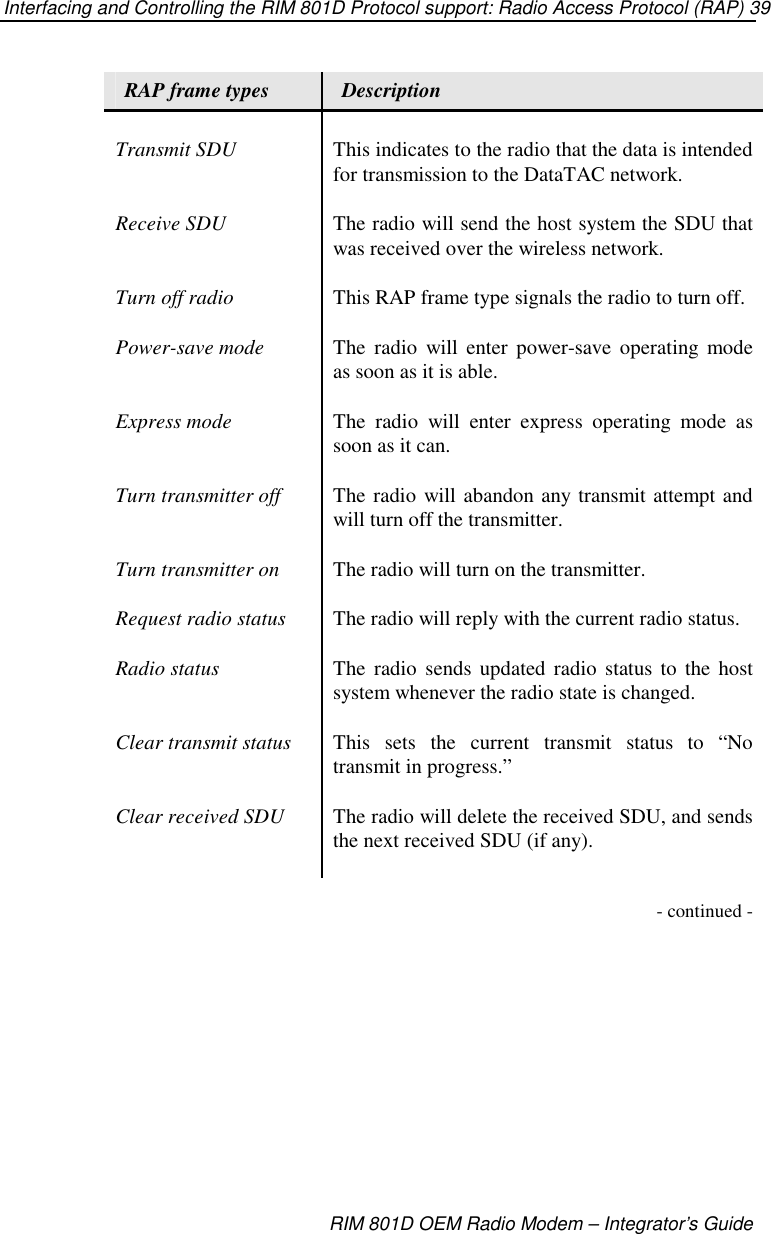
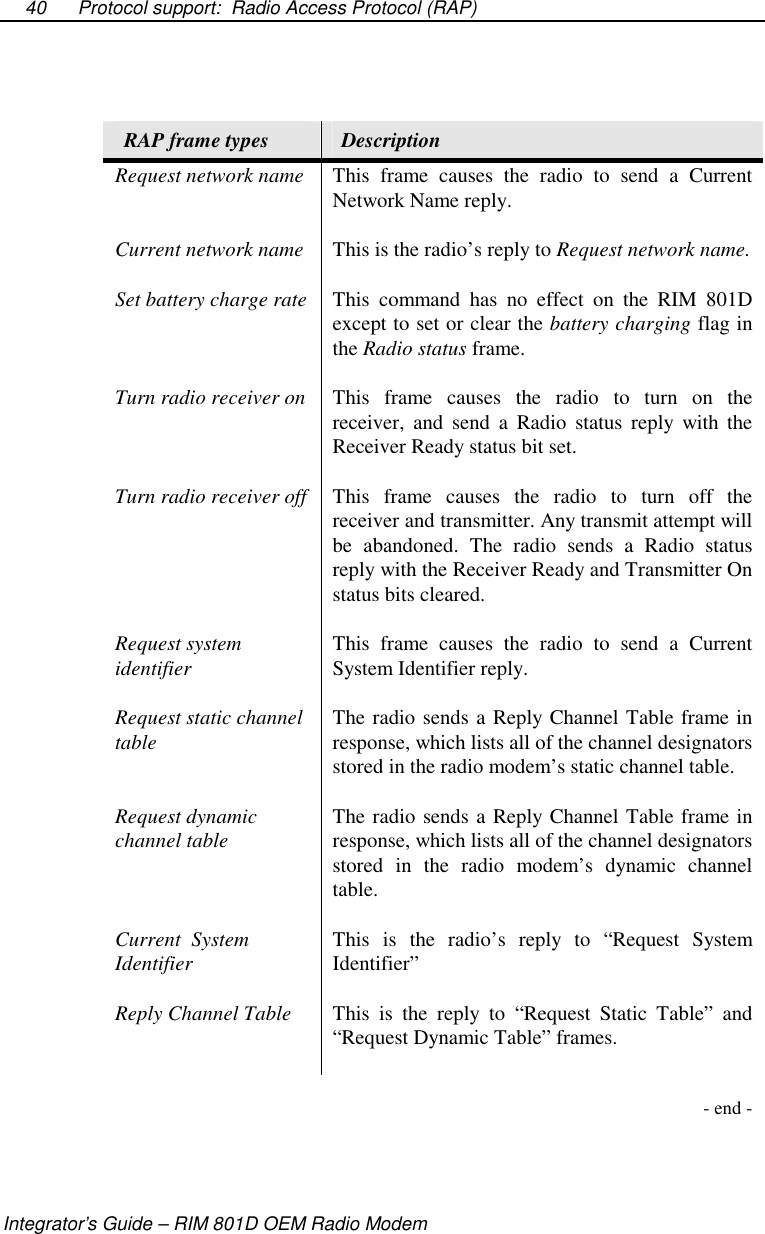

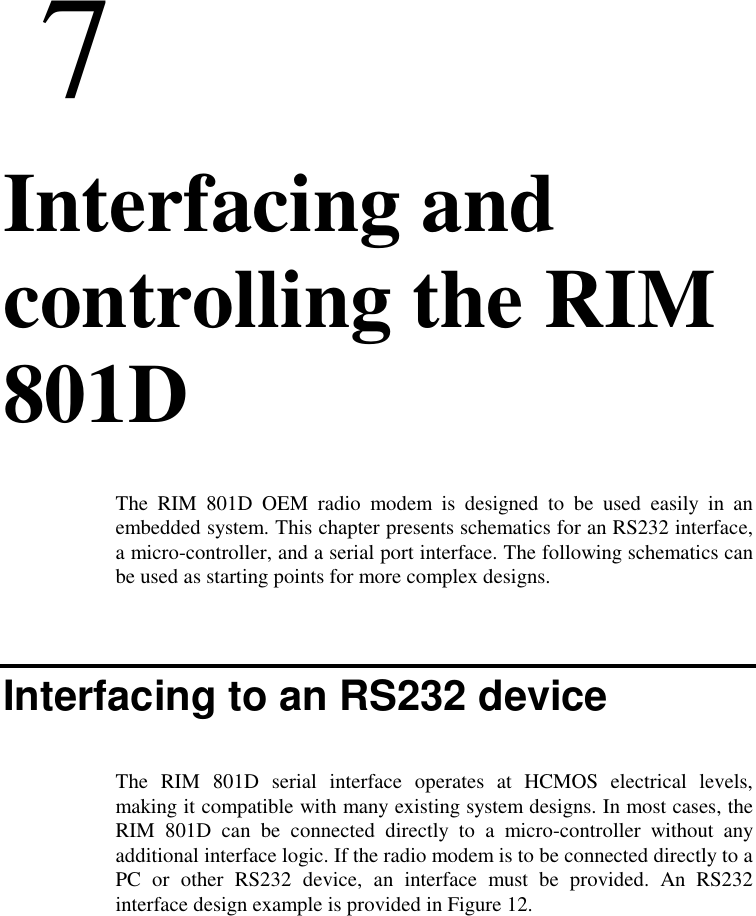
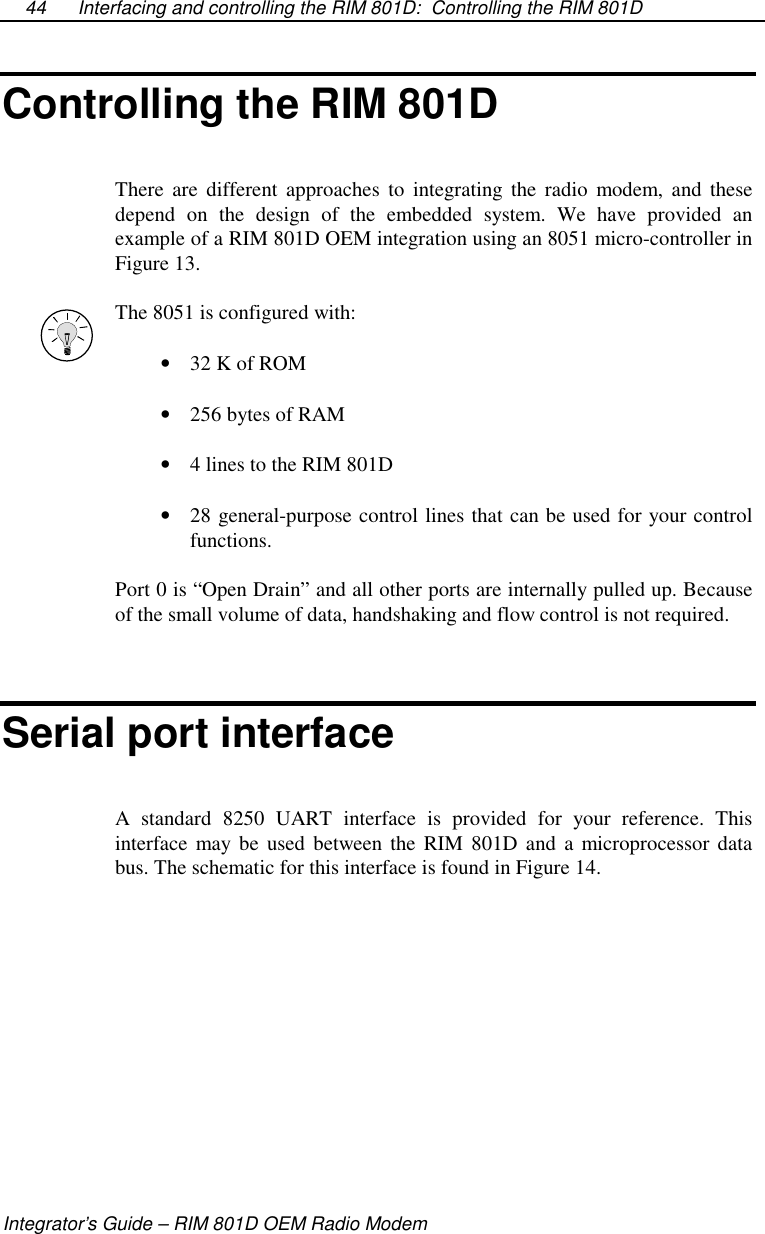

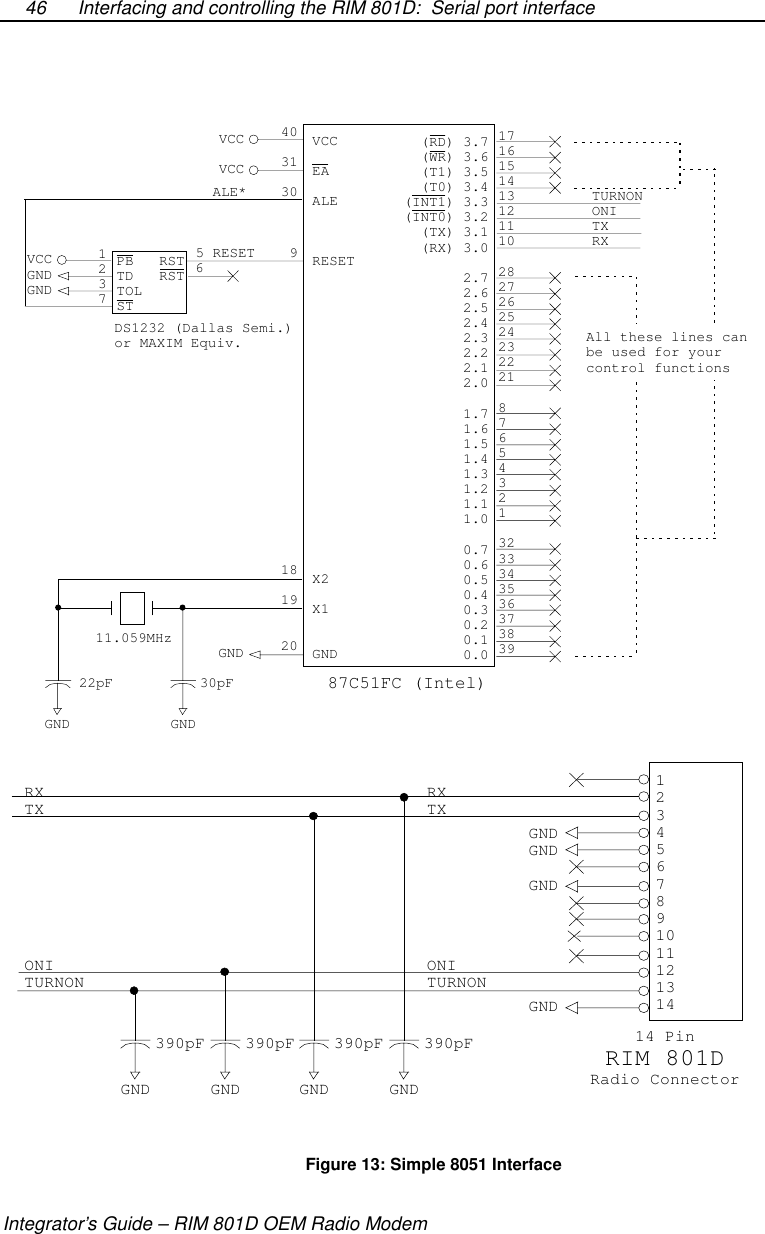
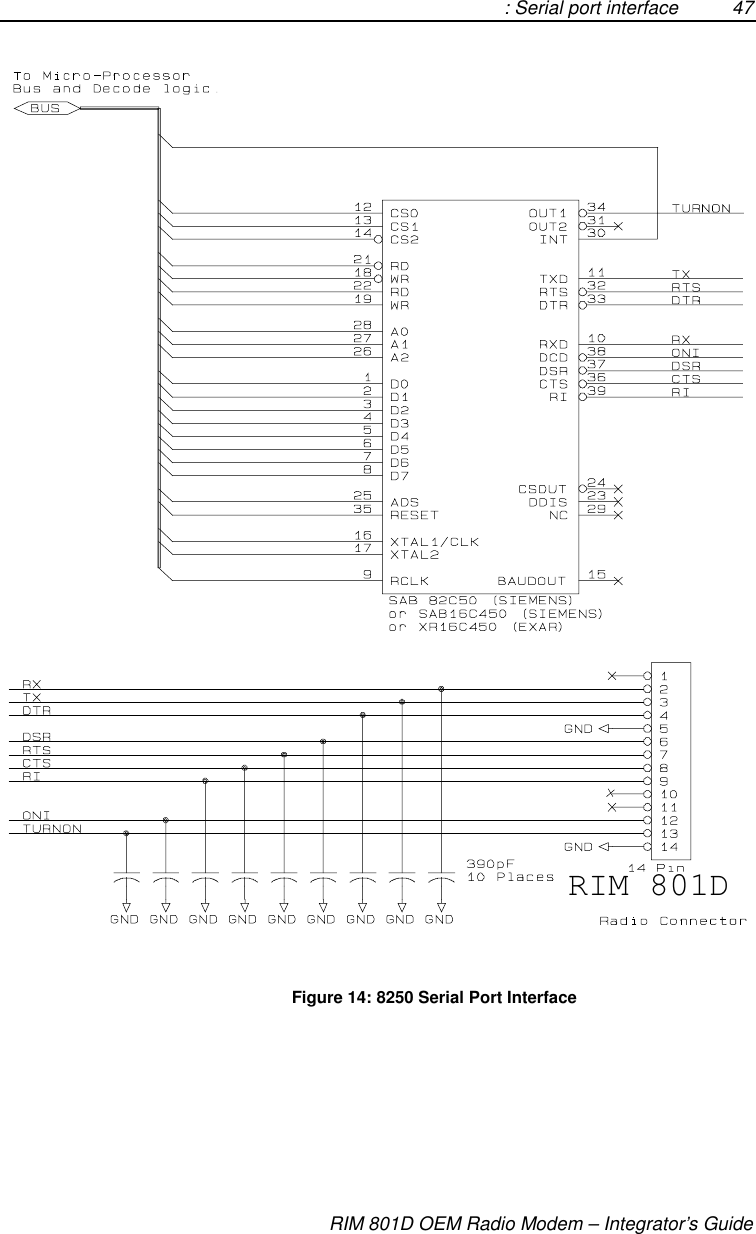



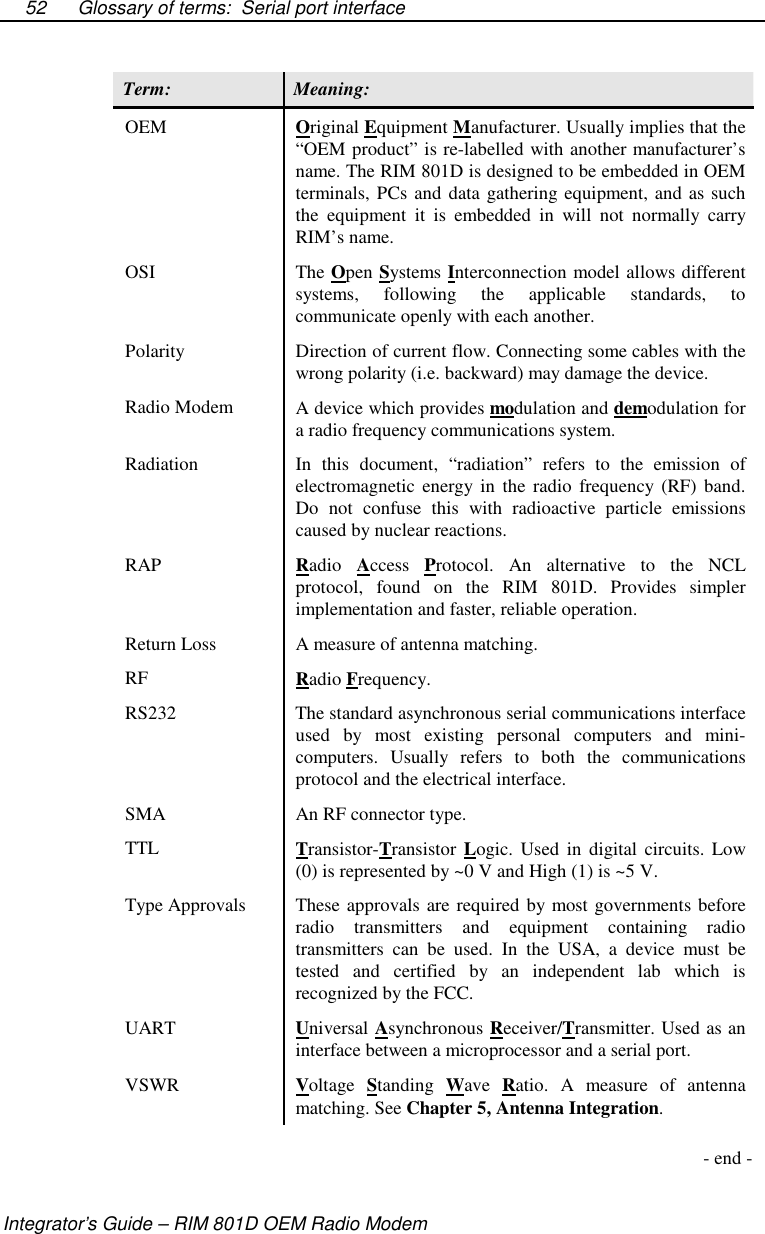
![AppendicesAppendix I - PartsCompany Name Part Description & Part Number3M - Industrial Tape &Specialties Division [USA] VHB technical data sheetPart #: 70-0702-0266-1(104.5)R1Reclosable FastenersPart #: 70-0704-5609-3(833)JRAntenna Technology, Inc.[Taiwan] DataTAC AntennasAustin Antenna [USA] DataTAC AntennasHuber & Suner [USA &Canada] Straight MMCX connectorsPart #: 11MMCX-50-2-1C/111Right-angle MMCX connectorsPart #: 16MMCX-50-2-1C/111EZ Flex 405 antenna cabling (Length 183mm)with straight MMCX and SMA connectorPart #: 133REEZ4-12-S2/1216EZ Flex 405 antenna cabling (Length 183) withright-angle MMCX and SMA connectorPart #: 133REEZ4-12-S2/1699SMA connectorPart #: 25SMA-50-2-25/111- continued -](https://usermanual.wiki/General-Dynamics-Itronix/XC6250RIM801D.User-Manal-RIM-Manual/User-Guide-114945-Page-63.png)
![Appendices: Appendix I - PartsIntegrator’s Guide – RIM 801D OEM Radio Modem54Company Name Part Description & Part NumberHuber & Suner [Canada] EZ Flex 405 antenna cabling with right-angleMMCX and SMA connectorPart #: 133REEZ4-12-S2/1699SMA connectorPart #: 25SMA-50-2-25/111Larsen [USA] DataTAC AntennasM/ACOM [USA] SMA jack connectors for flexible cable(Straight Cable Jack)Part #: 2032-5007-02 (RG 142)SMA jack connectors for flexible cable(Bulkhead Feedthrough Cable Jack)Part #: 2034-5004-02 (RG 142)SMA jack connectors for flexible cable (FlangeMount Cable Jack)Part #: 2036-5003-02 (RG 142)Molex Canada [Canada] 4” 14-pin-FPC cablePart #: 88-00-8025Wire-to-board housing, 2.00 mm (0.079”)Part #: 51005-0200Wire-to-board3/32” crimp terminalPart #: 50011-8100AMP 1.0 [0.039] FPC connector (surfacemount)Part #: 1-487951-4-end-](https://usermanual.wiki/General-Dynamics-Itronix/XC6250RIM801D.User-Manal-RIM-Manual/User-Guide-114945-Page-64.png)
![Appendices: Appendix II - Company Directory 55RIM 801D OEM Radio Modem – Integrator’s GuideAppendix II - Company DirectoryCompany Name Contact Information3M - Industrial Tape &Specialities Division [USA] Tel: 1-800-227-5085Fax: 1-612-733-1771Antenna Technology, Inc.[Taiwan] Tel: +886-3-3223636-8Fax: +886-3-3223639ARDIS Tel: 1-800-494-1732Tel: 1-847-913-1215Fax: 1-847-913-1453Austin Antenna [USA] Tel: 1-603-335-6339Fax: 1-603-335-1756Huber & Suner [USA] Tel: 1-802-878-0555Fax: 1-802-878-9880Huber & Suner [Canada] Tel: 1-800-627-2212Tel: 1-613-596-6646Fax: 1-613-596-3001Larsen [USA] Tel: 1-800-663-6734Tel: 1-604-299-8517Fax: 1-604-299-4191M/ACOM [USA] Tel: 1-617-890-4750Fax: 1-617-672-1010Molex Canada [Canada] Tel: 1-416-292-1444Fax: 1-416-292-2922](https://usermanual.wiki/General-Dynamics-Itronix/XC6250RIM801D.User-Manal-RIM-Manual/User-Guide-114945-Page-65.png)

